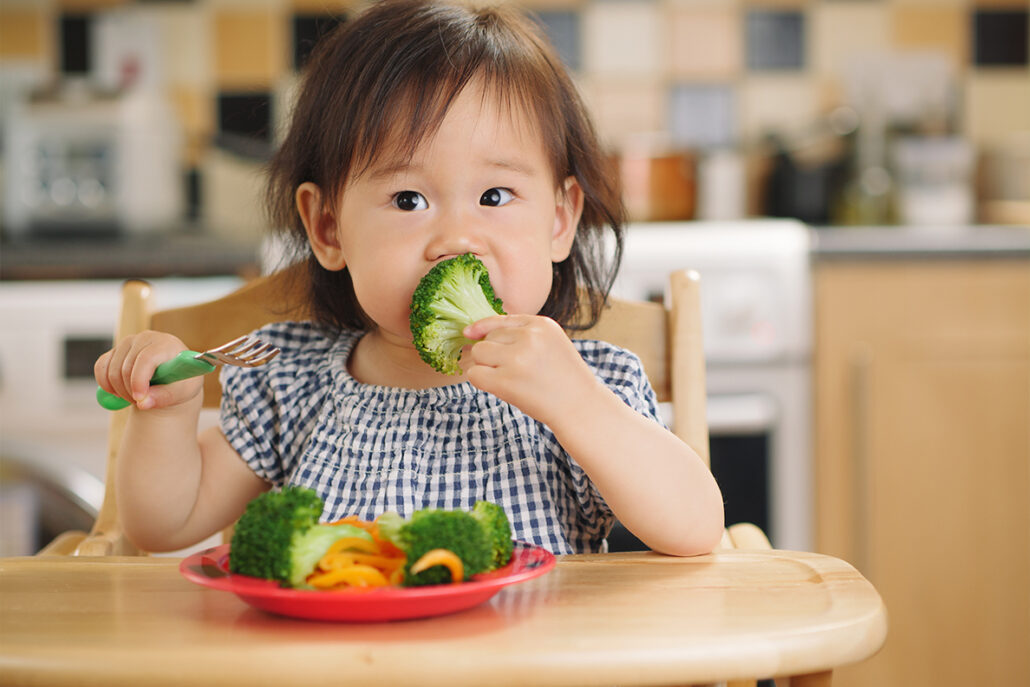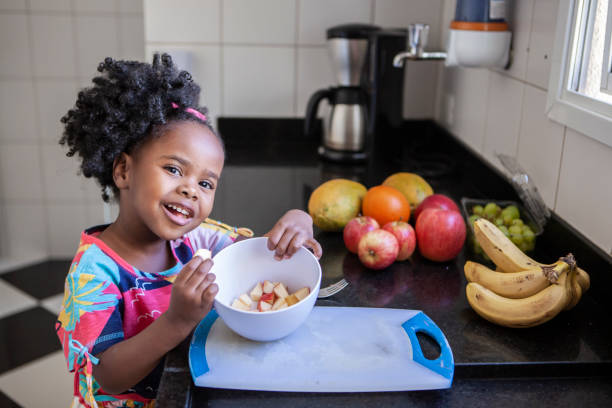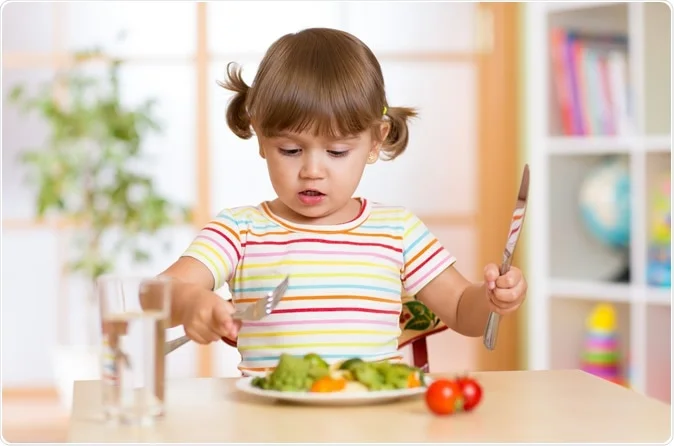
These tips are life-changing when learning how to get a toddler to eat healthy food. Getting a toddler to eat is already a chore. They want to sit for all of ten seconds, take two bites, then run away. Getting them to eat anything other than one item (and usually not a healthy one) for a week straight becomes difficult. So let’s dive into some tips on how to get a toddler to eat healthy food together!
HOW TO GET A TODDLER TO EAT FOOD THAT’S HEALTHY
Hands up – whose baby ate like a hungry horse, shoveling anything and everything into that cute little mouth? (That mouthing reflex comes in handy when you want to see if red bricks
or yellow bricks taste better.)
Then overnight they hit “toddlerhood” and the ONLY thing they would eat was plain pasta and, if you’re lucky, a bit of cucumber?
“I don’t like vegetables!” followed by “Yuck!” seem to be their favorite words.
You go from loving feeding your burbling baby to dreading feeding your toddler because most of it ends up on the floor.
Feeding your toddler a healthy diet can easily turn into a massive power struggle that saps your will to live until you just give in and hand them the entire packet of cookies. Surely that has enough calories to sustain them for a few days?
Toddler time is frustrating for parents for SO many reasons. Getting shoes on before we leave the house, brushing teeth, getting in the bath, getting out of the bath.
And on top of it all, your “good” eater suddenly turns into a picky eater with no explanation.
So what can you do to restore peace and calm whilst still making sure that your little one has enough nutrients to grow and thrive? (Oh, and so that they learn “healthy eating habits” along
the way?)
STEP 1: CREATE A RELAXED ATMOSPHERE
First, you need to take a step back and create a “happy healthy eating environment”.
The one big mistake I see is parents nagging and pressuring their kids to eat. Do you like to be nagged?
Nope! Nor do our kids.
In order to stop nagging, you need to stop wanting them to eat.
In order to stop wanting them to eat, you need to see the bigger picture.
When you’re in the depths of fighting over a piece of broccoli, it’s difficult to see the bigger picture.
Most parents worry that their child isn’t getting enough to eat, but actually they are getting as much as they need.
We totally over estimate how much young kids need and over compensate by giving them large portion sizes and then worrying when they don’t eat them.
If you’re worried, you should actually measure how much they’re eating and check to see if they’re growing well.
As a rough guide, a child who is growing properly is getting enough calories and most of their nutrients. (In order to check the micro nutrients you can either get a professional to
look at their diet, or do blood tests.)
The vast majority of toddlers fall into the “growing well” and getting enough nutrients category.

STEP 2: USE VITAMIN SUPPLEMENTS
In an ideal world, kids would get all their vitamins and minerals from fresh fruit and vegetables, but that’s really tough even for adults to do. Adding in a high quality vitamin supplement can help fill in the nutritional gaps for toddlers who aren’t known for balanced eating.
In the UK, supplements are recommended up until the age of 4. I guess the people who make the recommendations have kids of their own!
Constipation is a big problem that can also occur due to “not liking vegetables”.
If constipation is a problem, there are lots of natural things that you can do to help. You may also need to take medication.
STEP 3: FOCUS ON THE LONG TERM BENEFITS OF HEALTHY EATING
Once the basics are covered, you can take a sigh of relief and think about why you want your child to eat a healthy diet.
I am a huge advocate of healthy living and eating so don’t get me wrong when I say most of the benefits of healthy eating (not dying of cancer or diabetes or a heart attack) happen in
adulthood (unless of course your child’s diet is very bad and they are very overweight. Type 2 diabetes is now being seen in teenagers.)
Which means that you have their entire childhood to teach them healthy eating habits.
Yes, TEACH them healthy eating habits.
Healthy eating is like riding a bicycle. It’s something that we learn.
Most children (and adults for that matter) would happily live off a diet of cake, cookies and chips if left to their own devices.
No veggies, no fruit, nothing green.
That of course, doesn’t mean we should allow them just to live off treats.
But you don’t have to fight over the vegetables. You can relax knowing that when you present them with veggies, you’re teaching them that eating vegetables is part of normal eating.
And that we don’t just get to eat cake all the time.

STEP 4: CREATE AN EATING ROUTINE
I suspect that I don’t need to tell you that eating half an hour before dinner will mean your child isn’t hungry at dinner time and won’t eat their broccoli.
A routine is really simple. Breakfast, snack, lunch, snack and dinner. Or whatever suits your schedule.
You offer them “healthy eating opportunities”. You present food choices. Preferably healthy with something that is acceptable to them and allow them to eat what they want.
Which means that if chocolate cake isn’t on the table, it’s not on offer.
Here’s the really tricky bit.
They may decide that they don’t want to eat some of it or any of it. That’s ok, but when they ask for a cookie half an hour later, the answer is “the next meal is lunch time and we’re having baked beans on toast”.
They may scream, they may shout but keep calm. You are the parent of a toddler!

STEP 5: VARIETY IS THE SPICE OF LIFE
My final tip is to make sure you offer lots of variety.
It’s so easy to get stuck in a rut when your child refuses to eat the things you offer. You don’t have to always offer their favorites, but you should offer something that is acceptable and not totally revolting to them.
They may not always eat the variety, but I can guarantee you that if you don’t offer it, they won’t eat it!
TEACHING YOUR CHILD HEALTHY EATING HABITS
Feeding your toddler a healthy diet in a calm and relaxed way and teaching them healthy eating habits is perfectly possible.
Most of the struggles that I see are at root unrealistic expectations and a lack of understanding and confidence.
Just take a deep breath, calm down and keep going!

0 Comments